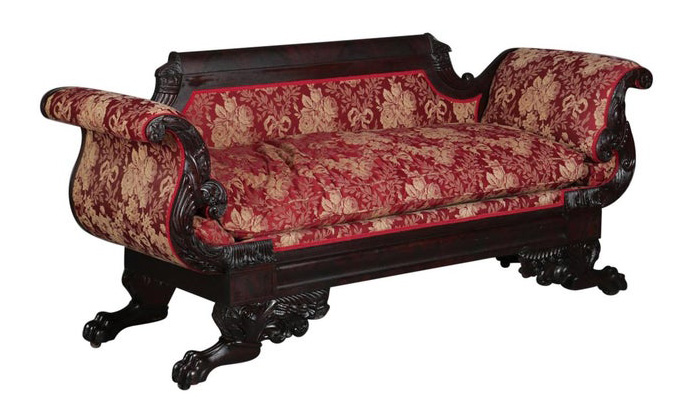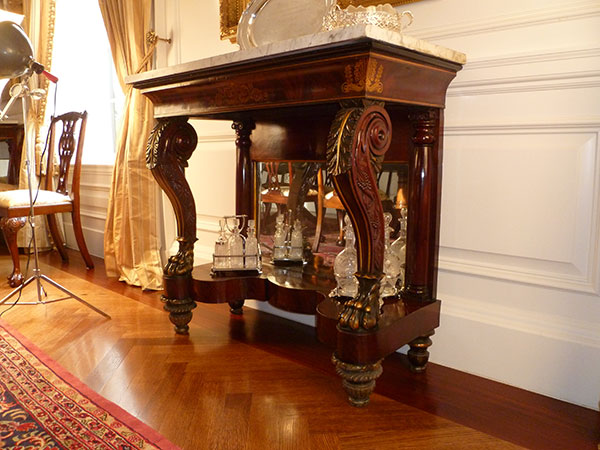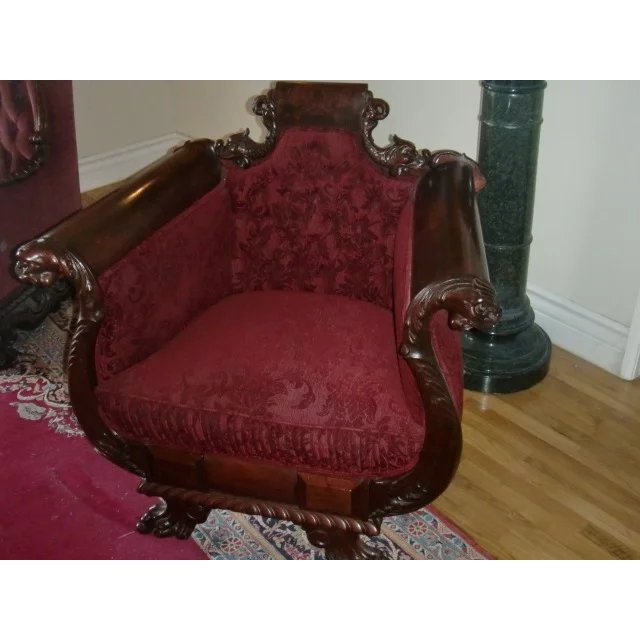New York was the center of this style with Duncan Phyfe and John Meeks and Sons being popular.
This style was revived in the 1890’s with oak and oak veneers being used extensively.
David Alling working in Newark, NJ was making fine chairs many featured a spread eagle or turtle as the back slat. His son Isaac continued in his fathers trade and became more well known.
Design Elements
- Mass replaced lightness
- C and S curved arms and legs
- Dark wood was the rage
- Black painted mahogany highlighted with contrasting ebony and maple veneers
- Gilt highlights often stenciled onto a piece
- Brass ormolu mountings
- Rope carved columns
- Legs became much more substantial, and often ended in a highly carved lion’s paw or extended to the floor with a swept foot
- Inlays of patriotic emblems especially eagles with spread wings and flags, acanthus leaf, anthemion (stylized honeysuckle), dolphins, and rosettes
- Leather was incorporated into casework.
- Mantel clocks, sleigh beds, heavy and curved headboards and footboards, and sofa tables were introduced.
Examples
Here are a few examples of American Empire furniture. Click on any image to zoom in.
View Member Made Empire pieces from our Gallery >
< Back - American Period Furniture Timeline



